50% discount for the first 100 vehicles: Only 10% service fee for one year. Register now!
Clean the motorhome or caravan – how to find emptying stations
, Jun 2, 2022, Reading time: 9 min
Reading time: 9 min
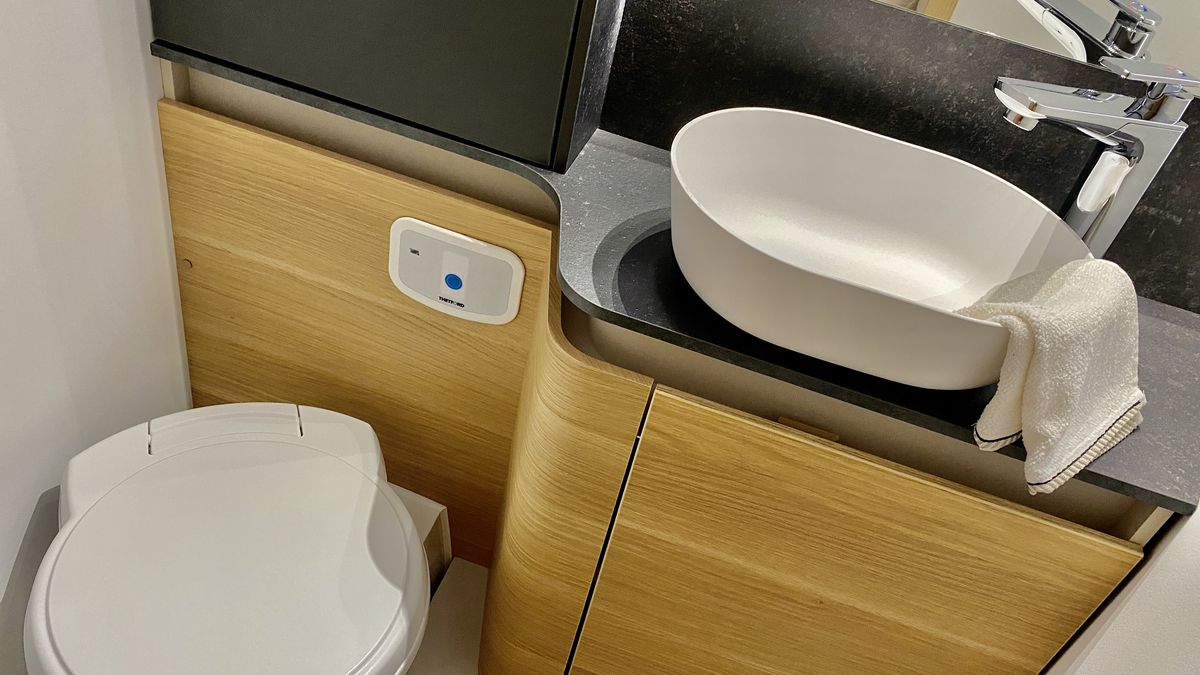
• • •
If you rent a motorhome or caravan, you need to clean the vehicle before returning it. Here you will find the best tips on how to clean easily, and how to find emptying stations for emptying toilets and wastewater.
Rough cleaning vs fine cleaning
If you rent a motorhome or caravan, you naturally need to clean the vehicle to some extent, before returning it. At MyCamper, rough cleaning is usually done by the renter, and fine cleaning is usually done by the owner. However, the agreement may vary from vehicle to vehicle, as the owner has the opportunity to state different rules for cleaning. Current rules for the vehicle you rent can be found in the vehicle advertisement.
By rough cleaning is meant, for example, emptying refrigerator, taking rubbish out and wiping up spills. The renter is also expected to empty the waste water tank and toilet before check-out. Fine cleaning refers to, for example, vacuum cleaning and external cleaning.

How to rough clean a motorhome or caravan?
When you rough clean a motorhome or caravan, you empty it of everything you have brought with you. You also wipe up spills, take the rubbish out and empty wastewater and toilet. Here you’ll find a checklist of what you are usually expected to do. Please note that specific owners may have rules that deviate in one way or another.
Checklist for rough cleaning the motorhome/caravan
- Empty the vehicle of your belongings
- Empty the fridge and freezer
- Empty the pantries of food that you have brought yourself
- Wipe up spills
- Take the rubbish out
- Empty toilet
- Empty wastewater tank

To empty the toilet
Most motorhomes and caravans have a so-called dry toilet, and this has a toilet cassette that must be emptied in the designated place when it is full, and when the vehicle is to be returned. Occasional older vehicles may be equipped with a fixed latrine tank instead of a toilet cassette, and then it is the tank that must be emptied instead. There are also camping vehicles that are equipped with an incinerator, which does not need to be emptied.
The toilet cassette is located under the toilet and is usually removed by opening a door from the outside. You may then need to press a latch to release the cassette so you can pull it out. A full toilet cassette is heavy to carry, so feel free to park near the emptying station, or use a trolley to move the cassette.
The toilet can, for example, be emptied at campsites and at certain motorhome stop sites, rest areas and environmental stations. Sometimes the chemical toilet is emptied behind a door, and other times it is emptied into a specially designed outdoor drain. The places can have a sign with the word “latrine” or a picture of a toilet together with an arrow from the toilet pointing down a drain.
In some places there may also be a specific service station from the company CamperClean (see picture below). When emptying the toilet cassette, it is advisable to rinse the cassette clean both outside and inside. There are also special products, which you can buy in camping shops, which can be placed in the cassette afterwards to reduce odors.

Sometimes there may be a special vending machine where you empty and clean the toilet cassette.
To drain the wastewater
Wastewater, or greywater as it is also called, is wastewater from kitchen sink, bathroom sink and shower. This wastewater is usually emptied by opening a valve under the motorhome or caravan, and the wastewater thus flows out from under the vehicle. The wastewater largely contains ordinary water and, for example, food residues, but also chemical substances in the form of detergents, soap and shampoo. It is therefore not permitted to empty wastewater into nature.
Emptying of wastewater is often done at a special station, where there is a gutter or hole in the ground for the wastewater. The station usually has a sign with a picture of a motorhome, and an arrow down below the vehicle.
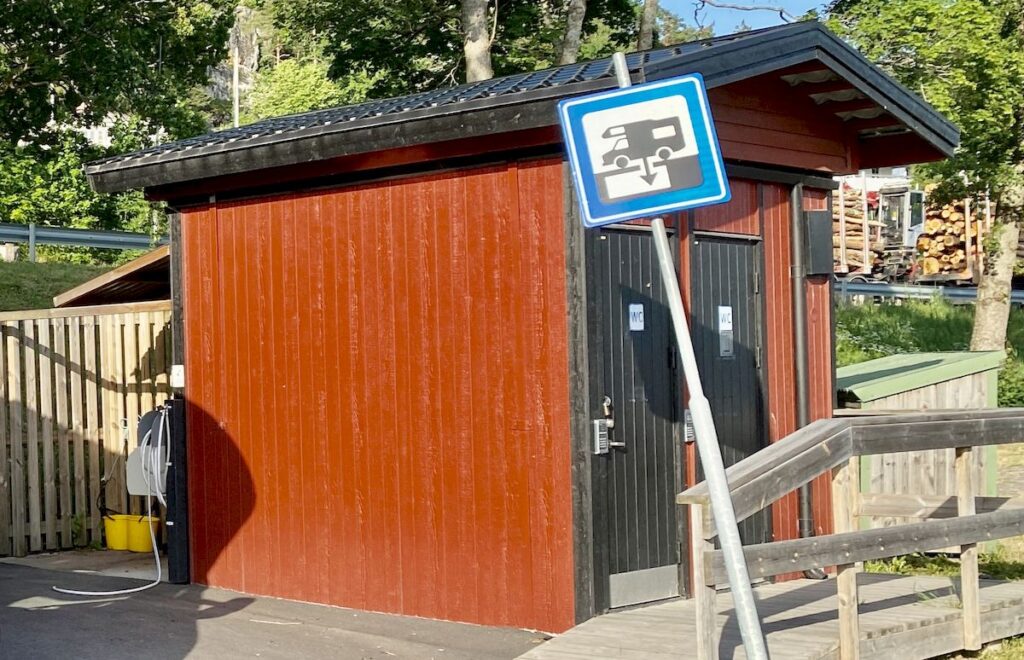
This sign shows that there is an emptying station here, where you can drain wastewater
How to find emptying stations
To be able to empty the toilet and waste water tank, you must find emptying stations. Neither the toilet nor the waste water tank may be emptied in nature, and it is not always appreciated that the toilet cassette is emptied in a normal toilet.
Campsites
Both toilets and wastewater can be emptied at almost all campsites throughout Europe. It is only if you have a stationary toilet tank that it can sometimes be difficult to empty on some campsites. Even if you have not stayed on a campsite overnight, you can often drive in and empty your wastewater tanks, for a fee.
Motorhome stop sites
Stop sites have different service levels, and it varies between countries on how common it is to empty tanks on stop sites. In the Nordic countries, it is relatively common to be able to empty the toilet on stop sites, but not as common to be able to empty the wastewater. For example, in Germany there is often good service on stop sites, while in the Czech Republic and Poland it may be better to look for campsites. To check which service is available at a specific location, you can use an app for motorhome stop sites, such as:
- Park4Night
- CamperContact
- Ställplatser (Stopover sites)
- Rast & Camp
Rest areas, petrol stations and environmental stations
In some countries, in addition to campsites and motorhome stop sites, you can also empty the wastewater tanks at certain rest areas, petrol stations and / or environmental stations. Note that it works differently in different countries.
Find emptying stations in Sweden
In Sweden, it is relatively common that you can empty the toilet at rest areas. In that case, there is a sign on one of the buildings that says “latrine” or something similar, and you can check in advance what service is available on the Swedish Transport Administration’s website. You can also empty at some environmental stations. An overview of emptying places in Sweden can be found at husbilsplats.se.
Find emptying stations in Norway
In Norway you can empty at certain petrol stations and environmental stations, and in both Sweden and Norway you can find CamperClean vending machines on this map. An overview of emptying places in Norway can be found at bobilplassen.no.
Find emptying stations in Finland
In Finland, you can empty both toilets and wastewater at certain petrol stations, including many of the chain ABC’s stations. In addition, you can find Finnish stop sites via the company BestPark. An overview of emptying places in Finland can be found on the Google map Puskaparkit.
Find emptying stations in the rest of Europe
In addition to the fact that you almost always can empty at campsites around Europe, and sometimes at stop sites, you can even sometimes empty at certain petrol stations (for example in Spain) or at certain rest areas (for example in Denmark and France).

At some rest areas, in Sweden and elsewhere, you can empty the toilet of motorhome or caravan.
How to fine clean a motorhome / caravan?
Of course, it isn’t enough to just do rough cleaning in motorhomes and caravans, but the vehicles also need to be cleaned more thoroughly from time to time. In the case of vehicles rented via MyCamper, the fine cleaning is usually done by the owner, but the conditions can vary from vehicle to vehicle. Fine cleaning means, for example, vacuuming and external cleaning.
Checklist for fine cleaning the motorhome / caravan
- Vacuum
- Wipe down the surfaces with wet cloth
- Clean bathroom and toilet
- Clean or wash the textiles
- Wash the outside of the motorhome / caravan
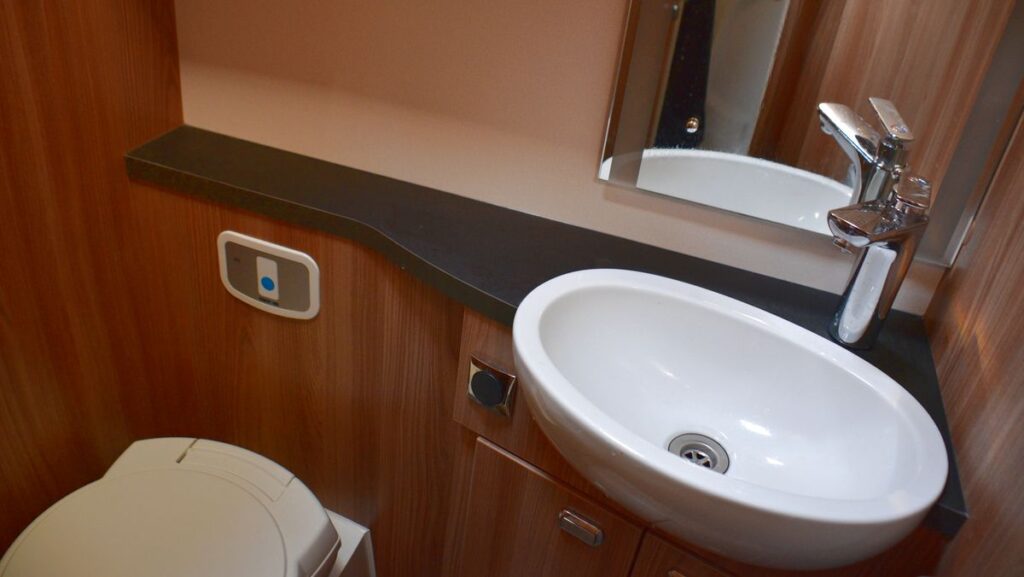
How to wash a motorhome / caravan?
When you wash a motorhome or caravan, you have to think a little differently than when you wash a car. Camping vehicles can be assembled and glued with agents that do not tolerate the strong solvents developed for cars. You also need to keep in mind that there are ventilation grilles, hatches and joints that may not withstand high-pressure washing or other hard water jets.
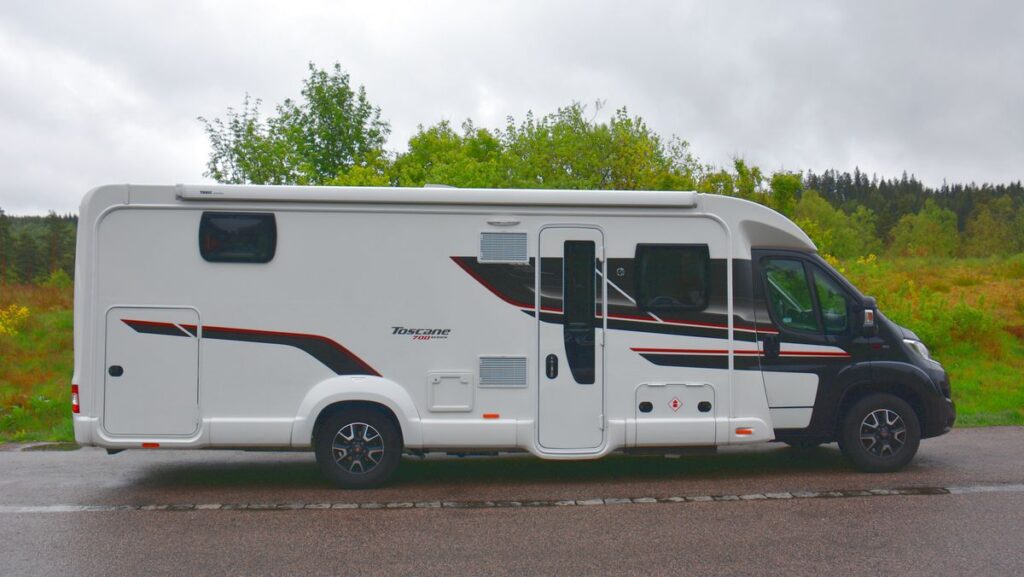
To the left of the living area door of this motorhome you see examples of two ventilation grilles.
You can rinse the vehicle gently, and then clean with a brush or sponge. It is possible to use a high-pressure cleaner, but in that case you need to be very careful, do not go too close, and avoid grilles and other type of openings. You also need to be careful with seals and joints, and avoid scratching the windows. It is best to use cleaning products that are specifically designed for motorhomes and caravans.

Since motorhomes and caravans can be larger than ordinary cars, you also need to find a suitable place for washing it. At some campsites there are places intended for washing the vehicles. There are also car washes that have places where there are higher ceilings. Washing in your own garage driveway is not recommended as the chemicals in the cleaning agents are not good for the environment.
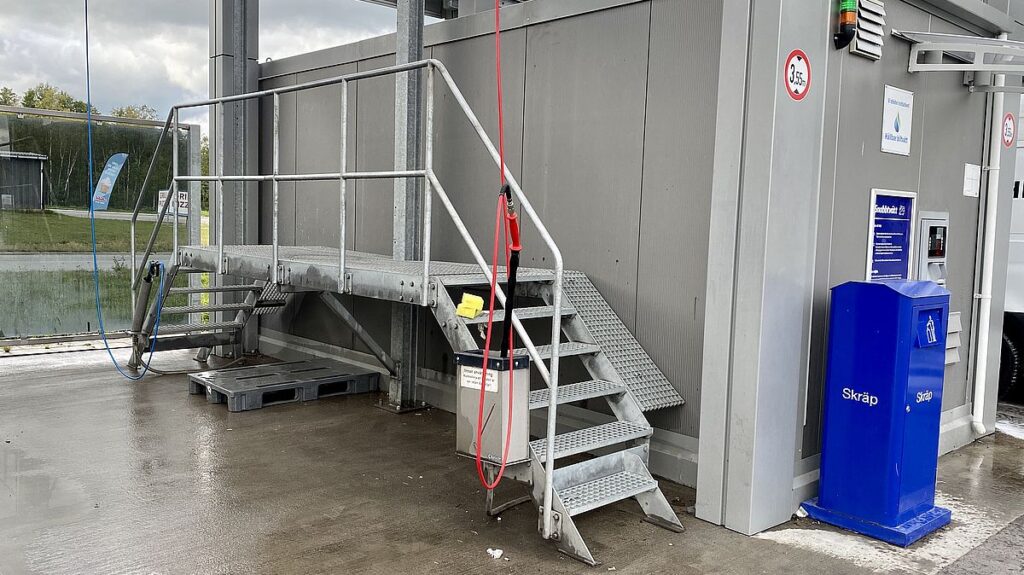
In some car washes there are places with high ceilings, as well as stairs and ledges for better access
Before returning a rented motorhome or caravan
Have you rented a motorhome or caravan via MyCamper that you must return? Check that you have carried out rough cleaning and other cleaning that is specifically requested by the owner, and that you have emptied the toilet and wastewater. Also fill up the diesel tank and check that the vehicle has not been damaged. A tip is to spend the last night at a campsite, so you have access to all the services you need to clean it and empty the tanks. Here is a final checklist before returning the vehicle.
Checklist before returning a rented motorhome or caravan
- Do the rough cleaning
- Do other cleaning that is required by the owner
- Empty the toilet
- Empty wastewater (greywater)
- Fill the diesel tank
- Check that the vehicle has not been damaged

Newest articles
No articles found